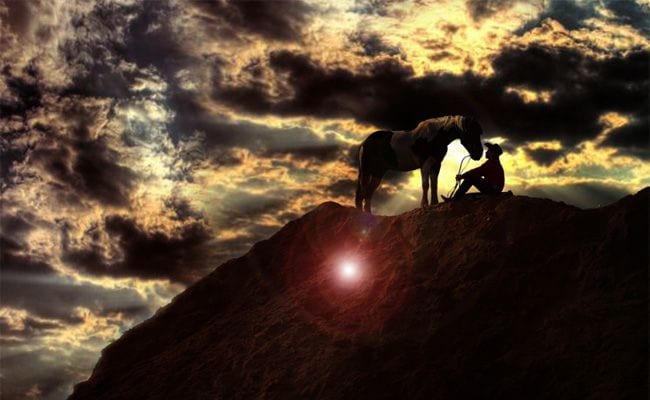
The synopsis for 7 Hours of Gunfire (1965) — the US government hires Buffalo Bill Cody, Wild Bill Hickock, and Calamity Jane to help the calvary stop the Sioux — had me too excited for my own good. I think William Shakespeare once said not to get too attached to people, because attachments lead to expectations and expectations lead to disappointments… or maybe it was Charlton Heston in The Omega Man (1971) who said that. But it doesn’t matter, because I didn’t take the advice.
Since childhood, I have been attached to those legendary figures of the Wild West listed in the synopsis of 7 Hours of Gunfire, and as a result I had expectations for the film that were sure to lead to disappointment.
The one advantage American westerns have over Spaghetti westerns is their sense of history and place. If you ask me, a European filmmaker, no matter how many tall-tales and history books he has read about the Wild West, can never fully understand, let alone express, what that mythical moment in time of westward expansion, of cowboys and indians, meant and means to Americans such as myself. To do so, one has to come of age, or at least live and work, in this land of the free where vigilantes have long been embraced as heroes and opportunity has never known any bounds.
I love the reoccurring fictional Spaghetti Western characters of Django, Sartana, the Man with no Name, Ringo, and Sabata almost as much as the films that feature them. However, because they are creations of the European imagination, they don’t have the familiarity, the depth, the built-in backstories that are inherent to the iconic real-life characters of the American frontier.
Billie the Kid, Jesse James, Wyatt Earp, Pat Garrett, Doc Holliday — they have been doing laps in the bloodstream of America for over 100 years. And the mere mention of their names summons in me, as an American with an addiction to escapism, all kinds of emotions and memories.
Most of my responses to these characters, I’ll admit, are based on pop-culture references and fabricated fables that any Spaghetti Western director could also access, but some of them are undoubtedly tied to specific places and times in my own life. Because I was born in New England, moved west to Arizona, and recently settled down in San Francisco where a modern day technological Gold Rush is taking place, I feel as though I have a connection to those legendary figures who populated the real Wild West and, similarly, to those traditional American westerns that reinvent, time and time again, their myths.
While Spaghetti Westerns as a genre are, for me, superior to American westerns in nearly every cinematic aspect — story, music, themes, cinematography, sets, action, and so on — they don’t have the ability to bring the past, no matter how false that past is, to life on the screen. And that’s the reason the best directors of the genre invent their own legends rather than trying to reinvent the legends of the Wild West. There’s no doubt that this approach has worked, but I’d be lying if I claimed not to have fantasies of Clint Eastwood’s Man with No Name hunting-down Billie the Kid for a bounty or of Franco Nero’s Django facing-off against Wyatt Earp in a showdown.
With 7 Hours of Gunfire, I thought the Spanish director J. R. Marchent would make my fantasies a reality by combining the virtues of the Spaghetti Western with the legends of the Wild West. Unfortunately, I thought wrong. 7 Hours of Gunfire is a mess of a movie. There’s no doubt that Marchent, by bringing Buffalo Bill Cody (Rik Van Nutter), Wild Bill Hickock (Adrian Hoven), and Calamity Jane (Gloria Milland) together, played-out his own fantasies with the film, but his fantasies were far removed from my own. His depiction of the Wild West and its legends is at best sleep-inducing and at worst cringe-worthy.
The film begins as a bio-pic of sorts outlining the life and times of Buffalo Bill Cody. It shows him as a boy and how, after Wild Bill Hickock got him a job on The Pony Express, he becomes a hero. Then, as an adult, he acts as a pawn to the US government and is told to track down a group of gun-runners selling weapons to the Indians, a task that Hickock — when he is not shown rolling around the ground or forgetting to load his six-shooter like an over-the-top caricature of a drunk — helps him complete.
But along the way their task and the film as a whole loses its focus. There’s too many insignificant characters, too many meaningless dialogue exchanges, and too many minutes dedicated to the romantic troubles of Bill & Bill. Calamity Jane, meanwhile, serves no purpose in the story but to face rejection from the uninterested Hickock.
Although there are at least a half dozen impressively staged battle sequences between the Calvary and Indians in the epic tradition established by the amazing Birth of a Nation (1915), these sequences are spaced apart by an even greater number of xenophobic sequences involving the slaughter and slander of Indians in the shameless tradition established by the embarrassing Birth of a Nation.
Unless you are more attached to those legendary figures of the Wild West and maintain lower expectations than myself, then I wouldn’t recommend watching 7 Hours of Gunfire because it’ll disappoint you just as it did me.
* * *
Above: Cowboy & horse silhouette at sunset image from Shutterstock.com.


![Call for Papers: All Things Reconsidered [MUSIC] May-August 2024](https://www.popmatters.com/wp-content/uploads/2024/04/all-things-reconsidered-call-music-may-2024-720x380.jpg)



